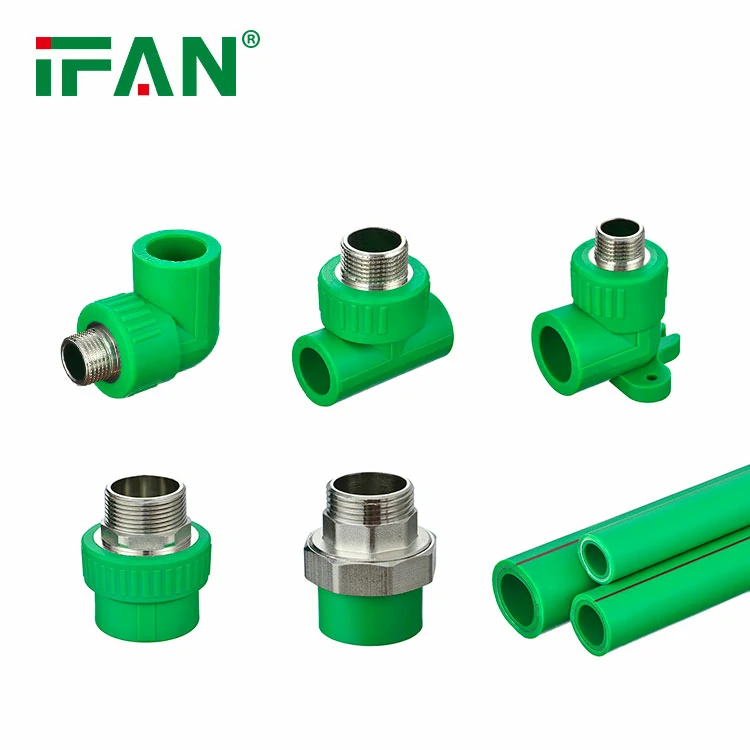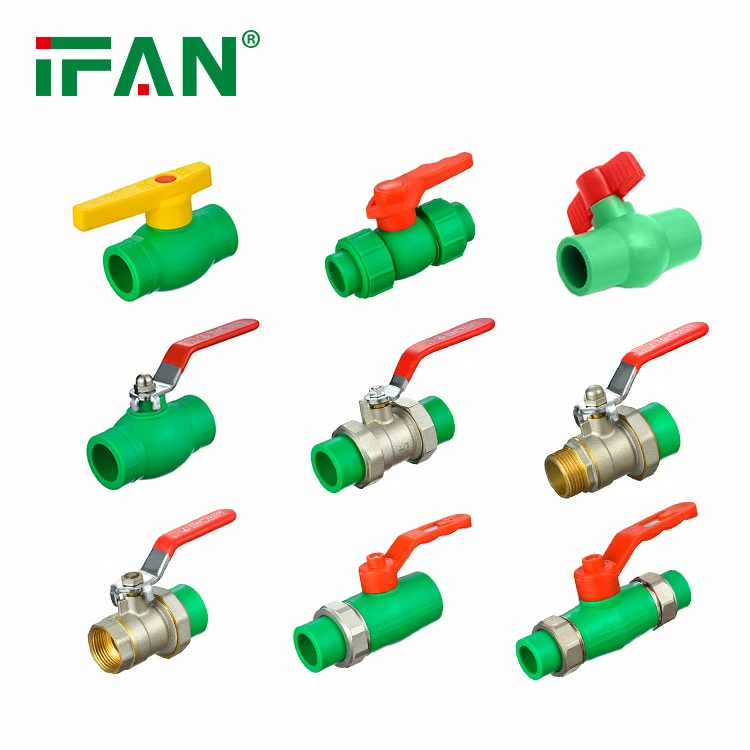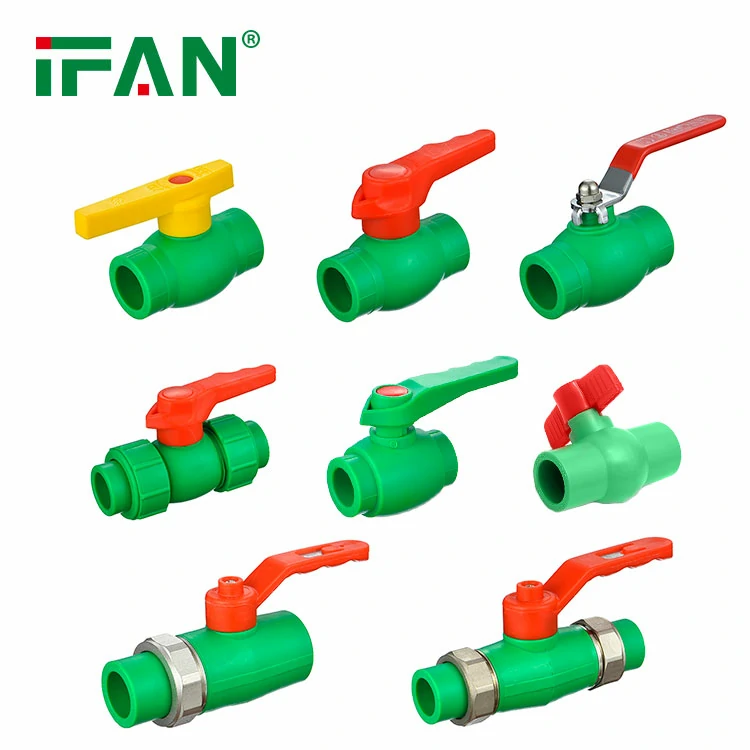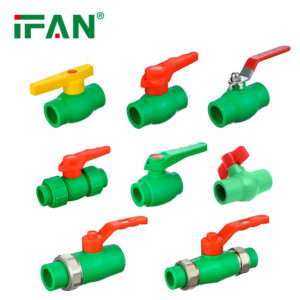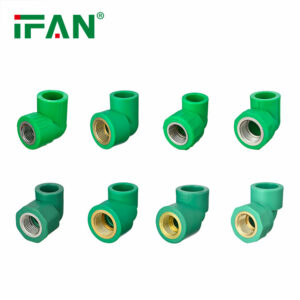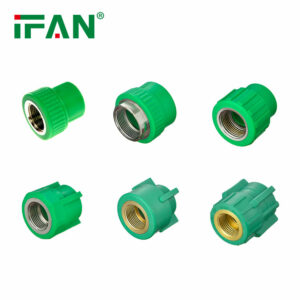Description
IFAN factory 30+ years manufacture experience support color /size customization support free sample.Welcome to consult for catalog and free samples.This is our Facebook Website:www.facebook.com,Click to watch IFAN’s product video.Compared with Tomex products, our IFAN products from quality to price are your best choice, welcome to buy!
PPR fittings, made from Polypropylene Random Copolymer (PPR), are revolutionizing the way plumbing systems are designed and installed in construction projects. From residential homes to large commercial buildings, these fittings offer a range of benefits that make them ideal for various construction applications. In this article, we will explore the innovative applications of PPR fittings in modern construction projects and how they are reshaping the industry.
What Are PPR Fittings?
Before diving into their applications, it is essential to understand what PPR fittings are. PPR fittings are plumbing components used to connect PPR pipes in various systems. PPR is a durable plastic material that is resistant to corrosion, high temperatures, and chemicals, making it ideal for a range of plumbing applications. The fittings include elbows, tees, couplings, adapters, and more, each serving specific functions in a piping system.
Innovative Applications of PPR Fittings in Construction Projects
1. Water Supply Systems
One of the most common and innovative applications of PPR fittings is in water supply systems. Whether it’s for residential, commercial, or industrial buildings, PPR fittings ensure a leak-free, secure, and long-lasting connection for both hot and cold water systems. The corrosion resistance of PPR ensures that the water supply remains clean and safe, which is crucial for both potable and non-potable water systems.
In large construction projects, PPR fittings are increasingly used for main water supply lines due to their durability and the ease with which they can be installed. Their lightweight nature reduces transportation and installation costs, making them a cost-effective solution for large-scale water distribution systems.
2. Heating Systems
PPR fittings are also widely used in heating systems in construction projects. This includes both underfloor heating and central heating systems. The ability of PPR*to withstand high temperatures makes it the ideal material for hot water systems. Additionally, *PR fittings retain heat more effectively than many other materials, making them energy-efficient and ideal for reducing heating costs in buildings.
For example, in large commercial buildings or industrial spaces that require constant heating, PPR fittings are used in radiator systems and boiler connections.Their long lifespan and ease of installation reduce maintenance costs over time, making them a popular choice for these applications.
3. Industrial Applications
In industrial construction projects, PPR fittings*are often used for the transportation of various types of liquids and gases. Their resistance to chemicals and high temperatures makes them ideal for use in industries that handle corrosive substances or require reliable piping systems for fluid transport. Industries such as chemical processing, food and beverage manufacturing, and pharmaceutical production rely on PPR fittings to ensure the integrity of their piping systems.
For instance, in a chemical processing plant, PPR fittings can connect pipes that transport acids, alkalis, and other aggressive chemicals. The fittings provide a secure, leak-proof seal that prevents corrosion and contamination, which is essential for both safety and operational efficiency.
4. rinking Water Systems
The use of PPR fittings in drinking water systems is gaining traction in construction projects due to the material’s non-toxic properties. PPR does not leach harmful substances into the water, making it a safe and environmentally friendly choice for potable water applications. This makes PPR fittings an ideal option for drinking water supply lines in residential, commercial, and public buildings.
For example, many new residential complexes now incorporate PPR fittings in their plumbing systems to ensure that the drinking water remains free of contamination. Since PPR fittings are corrosion-resistant, they also reduce the risk of rust or scale buildup, which can impact water quality.
5. Sustainable Construction Projects
With the increasing emphasis on sustainable construction and eco-friendly materials, PPR fittings are emerging as a green alternative to traditional plumbing systems. The recyclable nature of PPR makes it a sustainable choice for construction projects looking to reduce their environmental impact. Moreover, PPR fittings are non-toxic, ensuring that the materials used in construction are safe for both the environment and the people living or working in the buildings.
For example, many green building projects are opting for PPR fittings as part of their water-efficient plumbing systems. By reducing the need for frequent repairs or replacements, these fittings contribute to the longevity of the building and minimize the overall environmental footprint of the construction project.
6. Fire Fighting Systems
PPR fittings are also gaining popularity in fire fighting systems due to their ability to handle high temperatures and their strength. The high resistance of PPR fittings to fire hazards makes them suitable for use in sprinkler systems and other fire suppression infrastructure in large commercial or industrial buildings. PPR pipes and fittings are used to connect various parts of a fire fighting system, ensuring reliable and efficient operation in the event of a fire.
7. Wastewater and Drainage Systems
In addition to water supply and heating systems, PPR fittings can also be used in wastewater and drainage systems. While PPR fittings are most commonly associated with pressurized systems, they are also used in gravity-fed systems for drainage and sewage pipes. Their resistance to corrosion and chemicals ensures that they can withstand the harsh conditions found in drainage systems without deteriorating over time.
For instance, PPR fittings are used in commercial buildings with large-scale plumbing requirements, such as hospitals or office complexes, where drainage systems must be robust and reliable.
Why Choose PPR Fittings for Construction Projects?
1. Durability and Longevity
One of the key reasons for the widespread use of **PPR fittings** in construction projects is their **durability**. Unlike metal pipes, which can corrode and degrade over time, **PPR fittings** are resistant to corrosion, rust, and wear. They offer a long lifespan, reducing the need for frequent repairs and replacements. This makes them a cost-effective solution for construction projects where reliability is crucial.
2. Ease of Installation
PPR fittings are easy to install, even for large-scale construction projects. The heat fusion process used to join **PPR pipes** and fittings creates a strong, leak-proof bond without the need for welding, threading, or special tools. This simplicity in installation reduces labor costs and ensures that the plumbing system is quickly and securely set up.
3. Cost-Effectiveness
While the initial cost of PPR fittings may be higher than other plumbing materials, their long lifespan and low maintenance requirements make them a cost-effective solution in the long term. For large construction projects, this can result in significant savings.
4. Eco-Friendliness
As sustainability becomes a top priority in the construction industry, PPR fittings are an attractive option. Made from recyclable materials and offering excellent energy efficiency, PPR fittings contribute to the overall environmental goals of many construction projects.
Conclusion
PPR fittings are playing a pivotal role in shaping the future of construction projects. With their versatility, durability, and cost-effectiveness, they are quickly becoming a preferred choice for a wide range of applications, from **water supply systems** to industrial installations. Their eco-friendly properties further add to their appeal, making them an ideal solution for modern construction projects looking to combine functionality with sustainability.
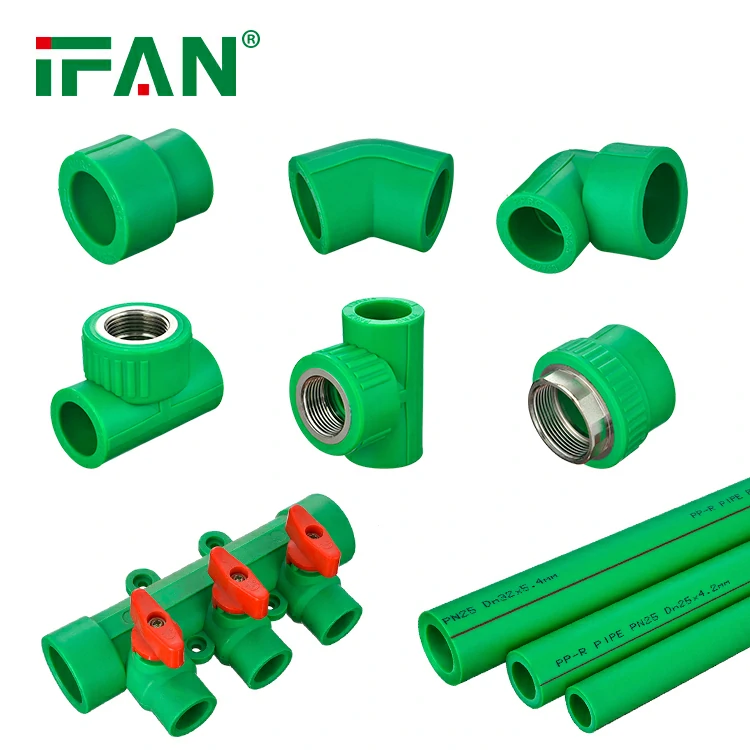
Frequently Asked Questions (FAQs)
1. What are the advantages of using PPR fittings in construction?
PPR fittings are durable, corrosion-resistant, and easy to install. They offer long-lasting performance with minimal maintenance, making them ideal for a variety of construction applications.
2. Can PPR fittings be used in hot water systems?
Yes, PPR fittings are designed to withstand high temperatures and are commonly used in hot water systems, including underfloor heating and entral heating systems.
3. Are PPR fittings eco-friendly?
Yes, PPR fittings are made from recyclable materials and are non-toxic, making them an environmentally friendly option for sustainable construction projects.
4. How do you install PPR fittings?
PPR fittings are installed using a heat fusion process, where the pipe and fitting are heated and then pressed together to form a secure, leak-proof connection.
5. Can PPR fittings be used for industrial applications?
Yes, PPR fittings are highly resistant to chemicals and high temperatures, making them suitable for use in **industrial plumbing systems that transport liquids, gases, and chemicals.
Related products
-
PPR Fittings
PPR Pipe and Fittings
-
PPR Fittings
PPR Fittings


